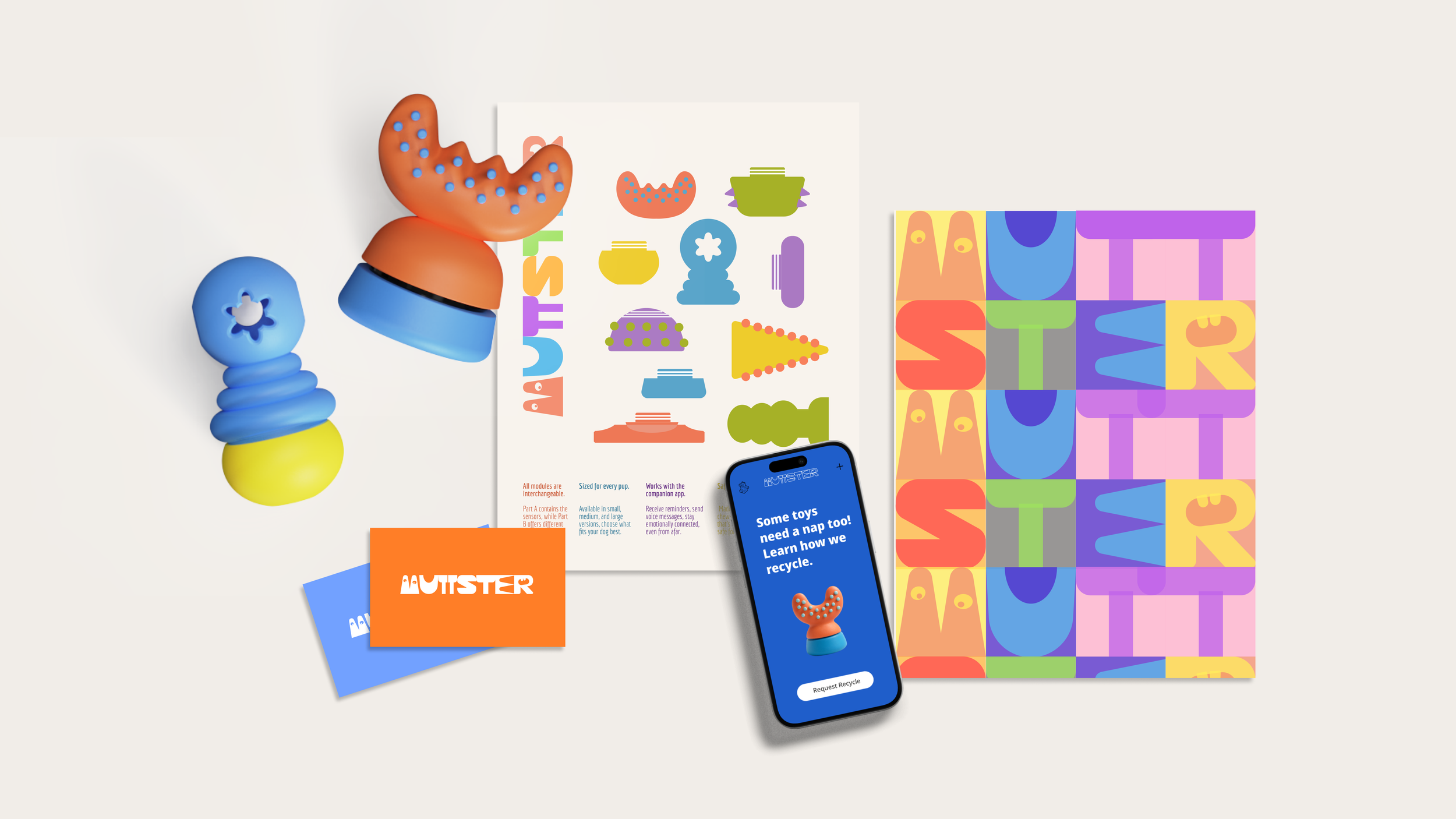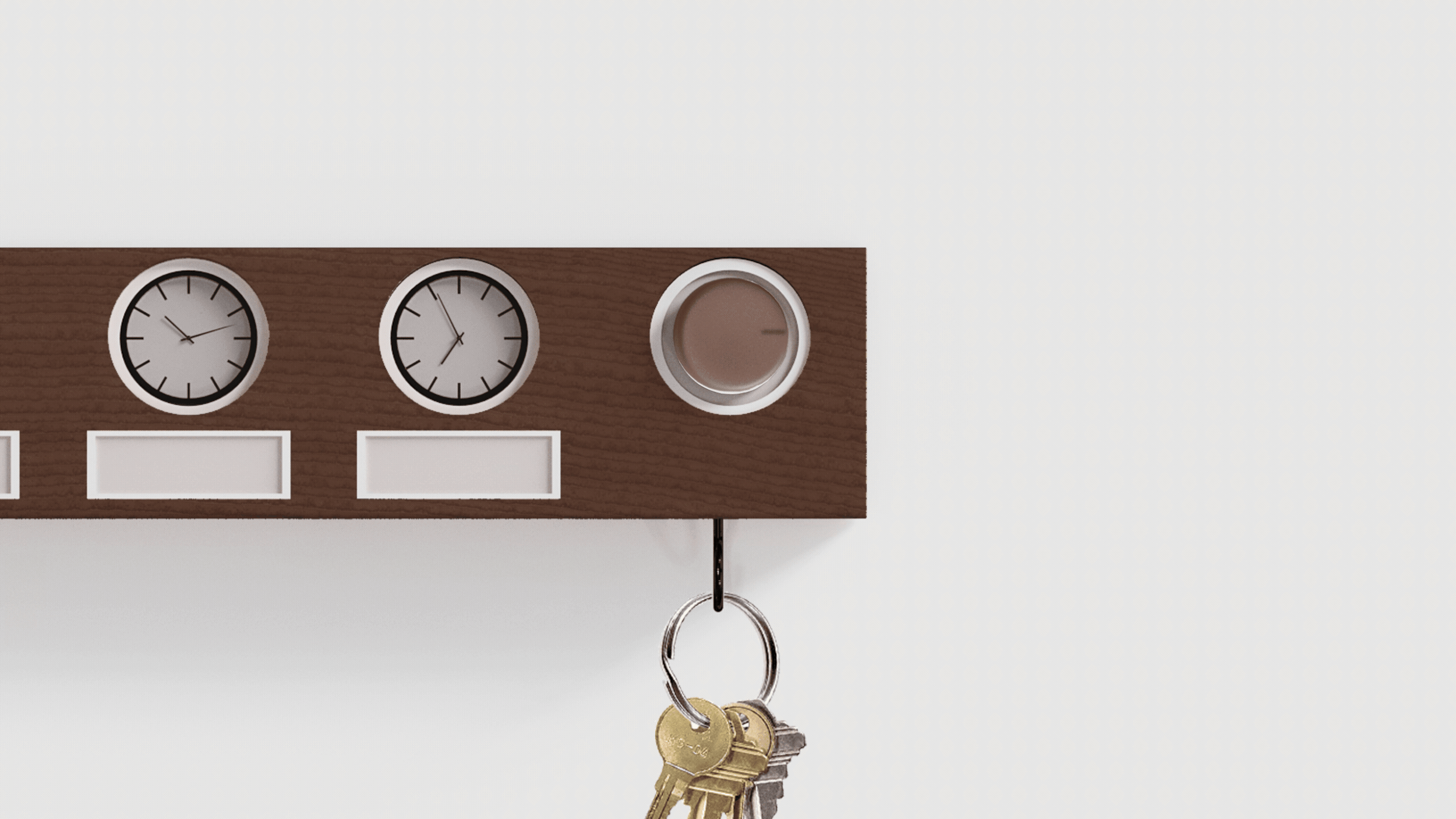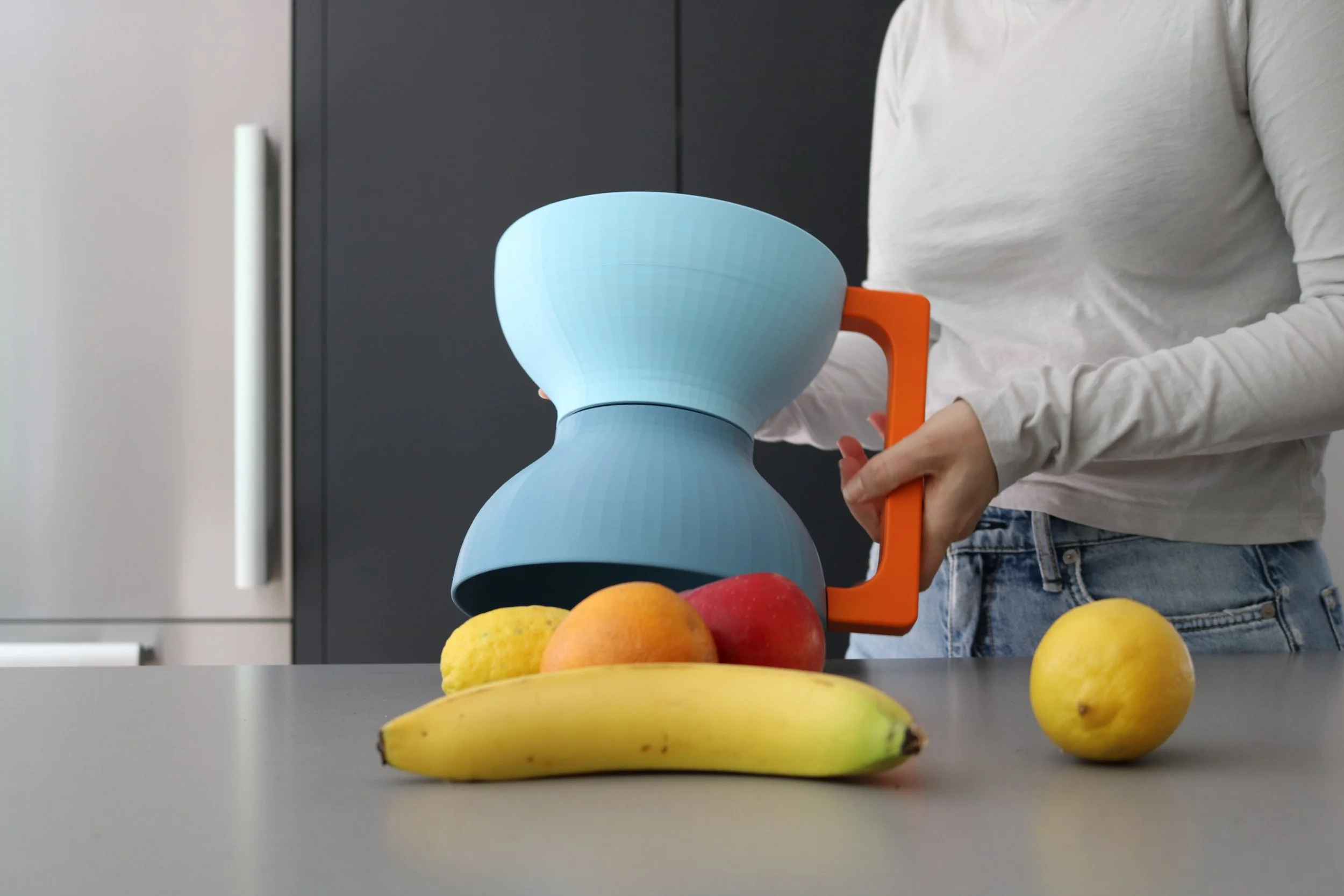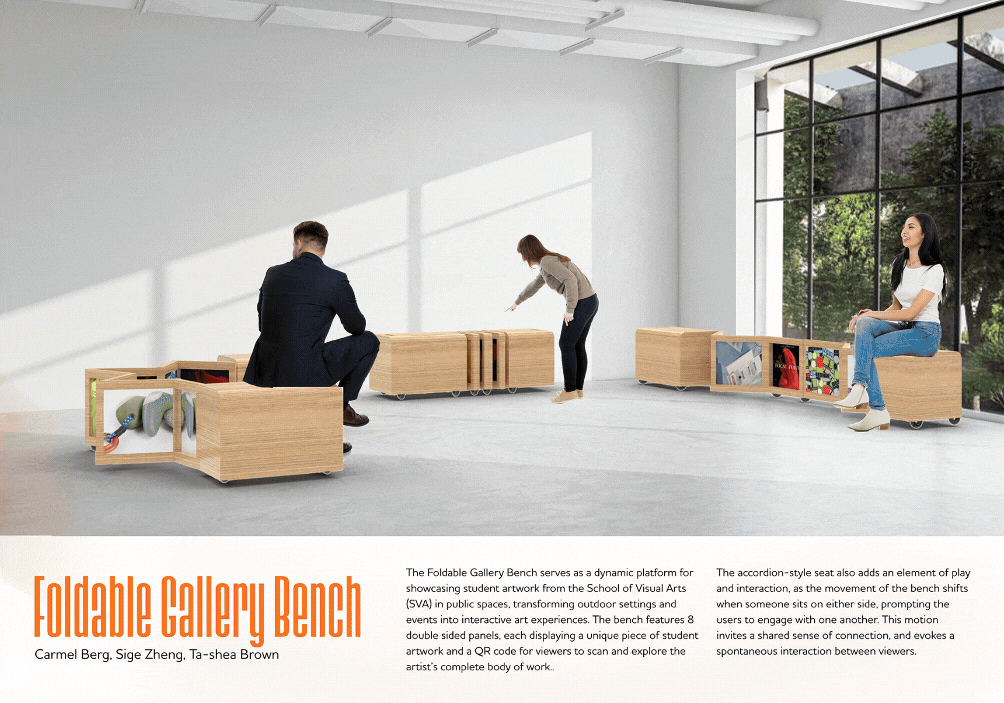
Student Projects
Products, Mobile Apps, Platforms, Thesis Work, and Design Thinking.
Applications are open! Deadline Jan. 15
〰️
Applications are open! Deadline Jan. 15 〰️
Featured Projects
Latest Projects
The Annual PoD Holiday Gift Guide! (2025 )
It’s that time of year again! We’re thrilled to bring you our second annual MFA Products of Design Holiday Gift Guide, featuring dynamic and delightful objects and interventions by MFA PoD alumni, faculty, lecturers, and guests. This year, in these highly virtual times, we’re thinking more expansively about what a “gift” might mean. Click below to check out products, events, courses, and experiences designed by our PoD community at large.
Rethinking Endings: From Ownership to Stewardship
Zai Thakoor’s thesis, Rethinking Endings: From Ownership to Stewardship, explores what happens to our products when they reach their end—not through failure, but through quiet wear, fading relevance, or simple neglect. While design often glorifies beginnings—newness, utility, unboxing—it rarely considers the emotional or practical dimensions of endings. This thesis asks: What if we treated endings with the same intention as beginnings?
Gifting Connection: An Attention Project
Tao Tao Holmes ’25 asks the question: Are the gifts we’re giving to kids… just commodities? Or are we building something that can keep growing—a relationship, a connection, a sense of security, a future memory?
Acts of attention, rather than objects of accumulation?
In the Dog House: Enhancing Human-Pet Interactions and Alleviating Separation Anxiety
Ningfu (Nymph) Yang’s thesis, In the Dog House: Enhancing Human-Pet Interactions and Alleviating Separation Anxiety, explores how design can ease the emotional strain of separation for both pets and their humans. Rooted in her own experience—and shared by many pet owners—Nymph addresses the growing concern of leaving pets alone and the anxiety it can trigger on both sides. As pet ownership continues to rise globally, her work points to the urgent need for more compassionate, emotionally attuned human-animal relationships.
Lost in Translation: Rethinking Acts of Care Across Distances
Harsha Pillai’s thesis, Lost in Translation: Rethinking Acts of Care Across Distances, probes a deceptively simple question: what does it mean to feel close to someone when you live oceans apart? Centered on the emotional and cultural gaps that emerge in Asian immigrant families, the work argues that reconnection often begins with recognition, not resolution.
Designed To Reconnect: Shifts In Everyday Food Habits For A Less Wasteful Future
Emma Brigaud’s thesis, Designed To Reconnect: Shifts In Everyday Food Habits For A Less Wasteful Future, investigates resilient and sustainable food practices within the shared spaces of a neighborhood: where we live, shop, and learn. As witnesses to climate change, consumers often feel paralyzed by despair and inaction. However, households are responsible for fifty percent of food waste in the U.S. which requires a shift in our everyday food habits. Through an exploration of the New York food system, Emma discovered that closing the psychological distance between people and the origins of their food requires a shift: knowing your food and knowing your neighbor. In conversations with chefs, educators, farmers, and municipal leaders, Emma identified opportunities to reduce waste, directly and indirectly, along the food habit lifecycle. Her work proposes playful and meaningful interventions that re-enchant our relationship with produce, turning a system of commercial waste into one of care, connection, and delight.
Rethinking Toilets: Aligning Design with Human Needs
Zhiwen (Kira) Fu’s thesis, Rethinking Toilets: Aligning Design with Human Needs, asks a quietly radical question: what if the most frequently used object in our lives—the toilet—was never truly designed with our bodies in mind? When Kira found herself tiptoeing and searching for a stool to support her feet—constantly shifting posture on the toilet—she began to wonder: “Is this a personal problem, or is something fundamentally wrong?” The issue, she realized, could lie in human anatomy, unhealthy bowel habits, or perhaps a flaw in the design of the toilet itself.
After the Night Ends: Reimagining the After-Work Life for Third Shift Workers
Jingyi Zhu’s thesis, After the Night Ends: Reimagining the After-Work Life for Third Shift Workers, centers night shift workers in the design of tools that support recovery, resilience, and recognition in a world built for the day. While most of society sleeps, third shift workers are on the job—staffing hospitals, driving buses, and keeping essential services running. Their schedules invert the body’s natural rhythms, forcing them to sleep through daylight and spend their waking hours under artificial light.
From Cosplay to Daily Life: Exploring the Positive Impacts of Role Play
Yining “Elaine” Zhang’s thesis, From Cosplay to Daily Life: Exploring the Positive Impacts of Role Play, reimagines cosplay not as escapism, but as a powerful tool for self-transformation. Drawing from her own experience as a cosplayer, Elaine explores how embodying a character can unlock confidence, reshape self-perception, and help individuals explore new aspects of identity. But what happens when the costume comes off?
Collective Power Tools: Increasing Capacity for Worker-Led Organizing
Erica Fink’s thesis, Collective Power Tools: Increasing Capacity for Worker-Led Organizing, centers workers in the design of organizing tools that build power from the ground up. Design is largely driven by industry – leaving many workers to either organize with tools not built for them or to never organize at all. Erica’s design practice asks: how might we increase capacity to create solidarity, consensus, and collective strength in ways that feel safe, energizing, and scalable? By lowering emotional and logistical barriers, her projects aim to make the early steps of worker-led organizing and forming unions more accessible.
Children‘s Medical Adherence: Designing to Alleviate Medical Fear in Children
Yining (Jinny) Zhang’s thesis, Children’s Medical Adherence: Designing to Alleviate Medical Fear in Children, explores how design can reduce anxiety and build emotional safety in pediatric healthcare. Rather than seeing children as passive patients, Jinny centers them as active participants—capable of curiosity, courage, and even joy—in their own medical experiences.
B-longing: A design approach to finding identity & Heritage for international adoptees
Hyotae (Haley) Kim’s thesis, B-longing: A Design Approach to Finding Identity and Heritage for International Adoptees, explores design solutions to help international adoptees reconnect with their identity and heritage. Recognizing the challenges adoptees face in tracing their origins, my work focuses on developing tools that preserve crucial information about their background. By integrating thoughtful design with technology, Haley’s thesis aims to create products that facilitate self-discovery, cultural connection, and a sense of belonging.
夕照闻: Fostering Connection and Belonging for Elderly Chinese Immigrants
Yifan Zhang’s thesis, 夕照闻: Fostering Connection and Belonging for Elderly Chinese Immigrants, reimagines aging not as a period of retreat, but as an opportunity to design for cultural continuity, emotional resilience, and meaningful connection among elderly Chinese immigrants in the U.S.
Deafscape and Hearingscape: Communication Beyond Spoken Language
In his thesis Deafscape and Hearingscape: Communication Beyond Spoken Language, Yuancong reframes communication design by focusing not on "fixing" Deaf experiences to fit hearing norms, but on creating shared spaces where both communities can thrive equally. Through interviews with CODAs (Children of Deaf Adults), DHPs (Deaf children of hearing parents), sign language interpreters, and special education experts, he uncovered a critical pain point: the imbalance of language proficiency within families, leading to emotional disconnection despite technological access.
Cultivating Financial Roots: Growing Children’s Financial Literacy for Life
Jiaqi Gu’s thesis, Cultivating Financial Roots: Growing Children’s Financial Literacy for Life, explores how early financial literacy can shape lifelong money habits. Growing up in a family where money was rarely discussed, Jiaqi experienced firsthand the confusion many young adults face when making major financial decisions for the first time. His project addresses this gap by focusing on children ages 6 to 12—a formative stage for developing lasting habits and attitudes toward money. Guided by the belief that financial education is not just about saving and spending, but about designing a more secure and empowered life, Jiaqi’s work reimagines how families can talk about money through playful, meaningful experiences.
Lights, Motors, Action: A Making Studio Roundup
Building Arduino circuits and writing C++ was a central focus of the class of 2026’s first-semester Making Studio course with Becky Stern. Here are some of our favorite projects from this class, in which students designed, built, and code electronic solutions for problems ranging from habit-building, being too noisy in the library, and working out smarter— not harder.
Caeruleo: An Interactive Lamp that Encourages Meditation
A nature-inspired sound-sensing wall lamp designed by Rida Zeng ‘26 to support meditation and bring harmony into your space.
Designing Public Interventions with Sigi Moeslinger and Masamich Udagawa of Antenna Design
Our first-year students wrapped up the first intensive course of the spring semester: Intervention Interaction, taught by Sigi Moeslinger and Masamichi Udagawa of Antenna Design. In just 5 weeks, students designed and constructed public interventions that aimed to spark interactions between members of community around SVA campus— with each team of 3 to 4 students optimizing their designs for a particular outcome.
Throo: An Interactive Public Installation
An innovative installation by Tao Tao Holmes ‘25, Zai Thakoor ‘25, and Jin Zhu ‘25 that invites passersby to playfully maneuver themselves through a series of vertical panels, stimulating movement, play, and public interaction.
Welcome to Startupland: Entrepreneurship for Sustainability and Resilience
Under the guidance of Suma Reddy, founder of Riffle Ventures and Gather—a robotic harvesting companion—the class of 2026 dug into climate issues as the basis of entrepreneurial explorations during first semester’s Entrepreneurship for Sustainability and Resilience course. Read through some of our favorite business solutions for problems ranging from wildfire mitigation in Canada, rooftop urban gardens to support native bee populations, and the potential for cemeteries to serve as communal parks preserving our connection to the past as well as our environment.





























